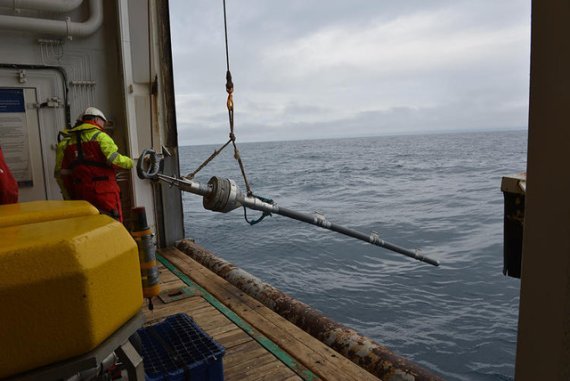Text: Nicole van ‘t Wout Hofland
Chlamydia bacteria infect not only humans but also koalas and microscopic organisms such as algae and plankton. For a long time, scientists thought chlamydia bacteria could not survive without a host of some sort, but the findings of professor of Microbiology Thijs Ettema’s team have changed that. They identified several species of chlamydia bacteria in the Arctic Ocean that seem to survive independently, without a host.
Underwater castle
The team of international scientists discovered the chlamydia bacteria by chance on an expedition to Loki’s Castle, a field of active hydrothermal vents in the Arctic Ocean between Iceland, Norway and Spitsbergen. Conditions there, at a depth of three kilometres, are extreme and what with the high pressure and the lack of oxygen, there is hardly any life. ‘Finding the chlamydia bacteria in this environment was completely unexpected and we wonder what on earth they are doing there,’ says Jennah Dharamshi, a researcher at Uppsala University. Given the large number of chlamydia bacteria in the area, the scientists think they have a big influence on the ecosystem.
Evolution
The scientists took samples of sediments from the seabed in the area of Loki’s Castle. Back in the lab, they studied the DNA in those sediments, thus discovering the chlamydia bacterium’s distant cousin. By comparing the genes of the newly discovered bacterial species with those of the one that causes chlamydia, the researchers gained new insights into how the chlamydia bacterium evolved into an invasive pathogen. Certain genes, important for the host-dependent lifestyle turned out to be present in the distant cousin too, causing the researchers to suspect that the Arctic Ocean bacteria do not survived entirely independently. ‘We think that they use nutrients from other micro-organisms in their habitat to survive and grow,’ says Ettema.
The discovery of the chlamydia bacteria in a remote environment also suggests that they are probably found in other places around the world too, and have been overlooked by previous studies. ‘Every time we explore a new environment, we discover micro-organisms that are new for science. That tells us how much there is still to be discovered,’ says Ettema.

 Photo: University of Bergen
Photo: University of Bergen